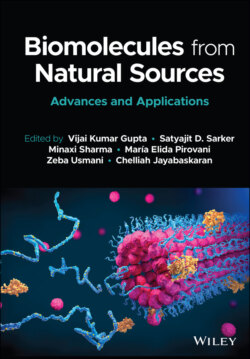Читать книгу Biomolecules from Natural Sources - Группа авторов - Страница 78
2.4.14.1 Alginate
ОглавлениеThe naturally occurring alginate polymers have great potential in drug formulation because of their extensive application as food additives and their recognized lack of toxicity. Alginate is a historic term used in many applications such as the cosmetic and pharmaceutical industries. As this group of polymers possess numerous characteristics that makes it useful as a formulation aid, both as a conventional excipient and more specifically as a tool in polymeric-controlled drug delivery. The alginates were discovered by a British Pharmacist, E.C.C. Stanford; commercial production started in 1929. The annual production of alginates in the world is about 30 000 tonnes. Alginic acid and it’s salts (Ca, Mg, Na and K) are abundantly present in brown algae (pheophyta) of the genera macrocystis, laminaria, ascophyllum, alario, ecklonia, eisenia, nercocystis, sargassum, cystoseira, and fucus. Acetylated alginates are also isolated from some bacteria genera pseudomonas and acetobacter. Red algae belonging to the family coralenacease also contain these substances. Alginate are used in nanoparticles, grafted donor sites in burns, wound dressing and in recycling of textile dye [212].
